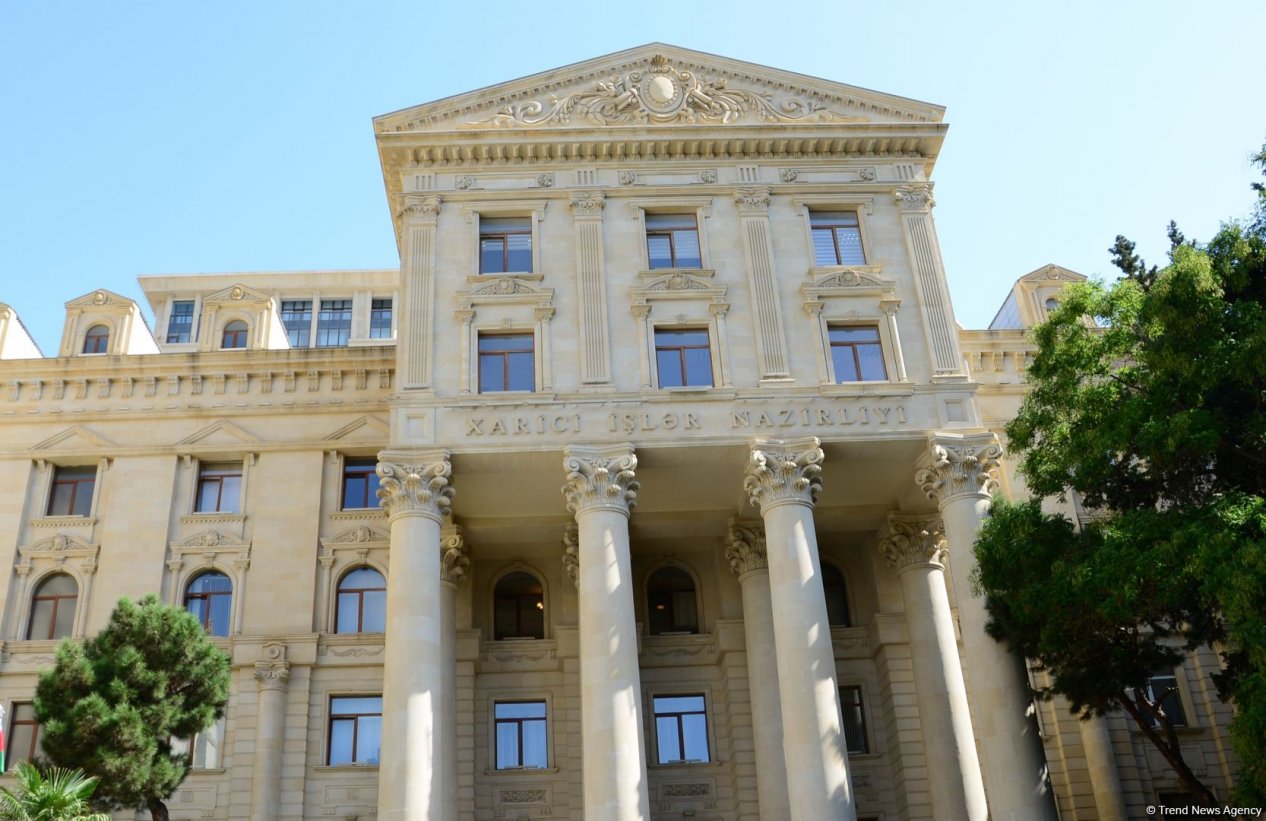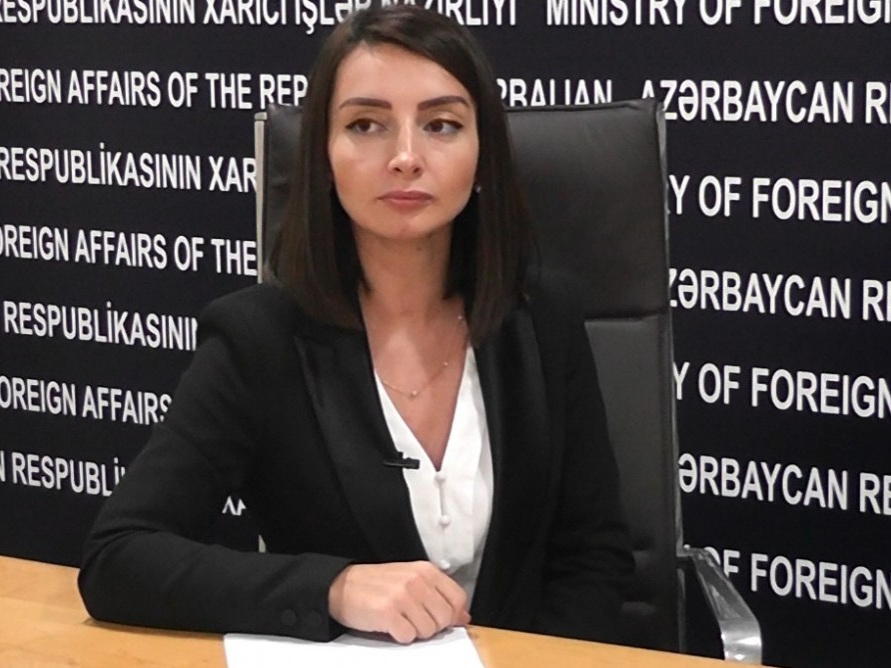
“The anti-Azerbaijani campaign won’t benefit Iran. It’s surprising that during the war the Iranian side did not bring up such accusations. After the war (before the new government came to power in the country) there was no issue that could raise concerns,” Spokesperson for the Azerbaijani Ministry of Foreign Affairs Leyla Abdullayeva said. She was commenting on the interview of Iranian Foreign Minister Hossein Amir Abdollahian on the Lebanese Al-Manar TV channel.

“We advise those who want to find terrorists look around themselves better. Back in October last year, the Azerbaijani Foreign Ministry provided the diplomatic corps accredited in the country, including the Iranian embassy, with information based on specific facts about the participation of Armenian mercenaries in the combat operations [during the 44-day war] in the previously occupied territories of Azerbaijan,” added Abdullayeva.
Faktyoxla Lab. has tried to figure out how plausible are the allegations of the participation of Armenian mercenaries in hostilities on the side of Armenia in the then occupied Azerbaijani territories.
To begin with, against the background of a wide campaign of Armenian, pro-Armenian, and now Iranian media resources on the topic of ‘Middle Eastern mercenaries’ who allegedly fought on the side of Azerbaijan in Karabakh, at one time very often there were messages confirming the massive participation of representatives of the Armenian foreign diaspora in the conflict, mostly of Middle Eastern origin.
The Armenian side traditionally portrayed such people as volunteers, who rose up “at the call of the heart” to fight for the “salvation” of the Armenian population of Karabakh. For example, at the beginning of the Second Karabakh War, Armenian President Armen Sarkissian, in an interview with Al Jazeera TV, admitted that not only servicemen of the Armenian Armed Forces are fighting in Karabakh, but also foreigners of Armenian origin, who, in his words, are trying to prevent the elimination of the Armenian population there.
At the same time, the ideological component of the motivation of these militants of Middle Eastern origin was presented by the Armenian side as follows:
- they are descendants of the Armenian inhabitants of the Ottoman Empire, brought up on the ‘ideals’ of the mythical ‘Greater Armenia’;
- they are brought up in the spirit of hatred towards Turkey and the Turks, which is ‘grounded’ by the Armenian ideologists with fabrications about the so-called genocide.
But there is evidence that there are many terrorists among them, and in general they are real mercenaries, since they are fighting for money.
The financial interest of the Armenian ‘volunteers’ was indirectly confirmed by Reuters, which published in November last year the story of a Lebanese Armenian fighting in the ranks of the Armenian Armed Forces in Karabakh. According to the agency, he had to move from Lebanon to Armenia last summer by the financial crisis that gripped this Middle Eastern country. The agency, citing members of the Armenian community, reports that scores of Lebanese of Armenian descent were already leaving Beirut for Yerevan months before the fighting, members of the community say. Lebanon’s economic collapse, and then the huge Beirut port explosion that killed nearly 200 people in August, have fueled migration, reads the article.
The fact of payment to Armenian mercenaries for participation in the battles was also confirmed during the war by the separatist regime in the occupied Azerbaijani territories.
One of the telegram channels covering the situation around the Armenian-Azerbaijani conflict at that time, Rybar, published a video in which a man in camouflage, who introduced himself as a militant of ASALA (Armenian Secret Army for the Liberation of Armenia) from Lebanon, talks about the participation of the Armenian diaspora in the Karabakh conflict.
ASALA is a terrorist group, which the secret services of many countries unanimously characterize as one of the most radical and cruel. It is responsible for dozens of contract killings, assassination attempts and terror attacks.
In addition, Armenia, by hook or by crook, tried to convince the world community that mercenaries were fighting on the side of Azerbaijan, resorting, among other things, to staged performances.
For example, during the war, Armenian and pro-Armenian telegram channels were spreading news about captured resident of the Syrian province of Ildib, 33-year-old Yusal al-Abed al-Haji, who allegedly fought on the side of Azerbaijan for a monthly reward of $2,000.
Subsequently, it turned out that the person posing as an Arab terrorist from Syria, who allegedly fought on the side of Azerbaijan, is in fact an ethnic Kurd. This was evidenced by other videos posted on social networks. One of them shows how this man is in the company of his armed comrades with the flags of the unrecognized ‘state’ of Kurdistan and the Republic of Armenia, shouting slogans in the Kurdish language. This video was published, among other things, by former deputy of the Armenian parliament, ethnic Kurdish Yezidi Rustam Bakoyan, with a subtitle “Our soldiers firmly stand on the border.”
Actually, the fact that Armenia used mercenaries in Karabakh has been known since the first Karabakh war.
Militants of both Armenian and non-Armenian origin actively participated in hostilities and committed war crimes in the Karabakh region, including the 1992 Khojaly genocide. In those years, the California-born international terrorist Monte Melkonian, who served a prison term in France for committing terrorist acts in the 1980s, who participated in operations against the Azerbaijani civilian population in Karadaghly, Khojaly and other settlements of Azerbaijan, became famous in those years.
The book published by his brother Markar Melkonian under the title “My Brother’s Road” confirms some of these actions: “Monte had arrived in Martuni twenty-two days earlier, and since then he had staggered across two killing fields soaked with the fresh blood of captives and unarmed peasants [meaning Karadaghly and Khojaly],” the book reads. In 1996, Melkonian, a member of the terrorist organization ASALA and a war criminal, was elevated to the rank of the national hero of Armenia.
In short, we come to the conclusion that Azerbaijan actually possesses information based on the specific facts of the participation of Armenian mercenaries in hostilities on the side of Armenia in the territories occupied at that time, and it was provided, among other things, to the Iranian embassy.
On the other hand, there are plenty of publicly available facts confirming the massive participation of foreign fighters in the war on the side of Armenia. Moreover, information about this comes from a variety of sources, which are sometimes difficult to suspect in political or other goals, preferences or sympathies. Official representatives of Armenia stubbornly call foreigners who fought in the occupied Azerbaijani territories as “volunteers,” however, in fact, a stranger who fights on the land of another sovereign state and receives monetary reward, in all respects corresponds to the concept of a mercenary, no matter what the motives and circumstances brought that person there.




















